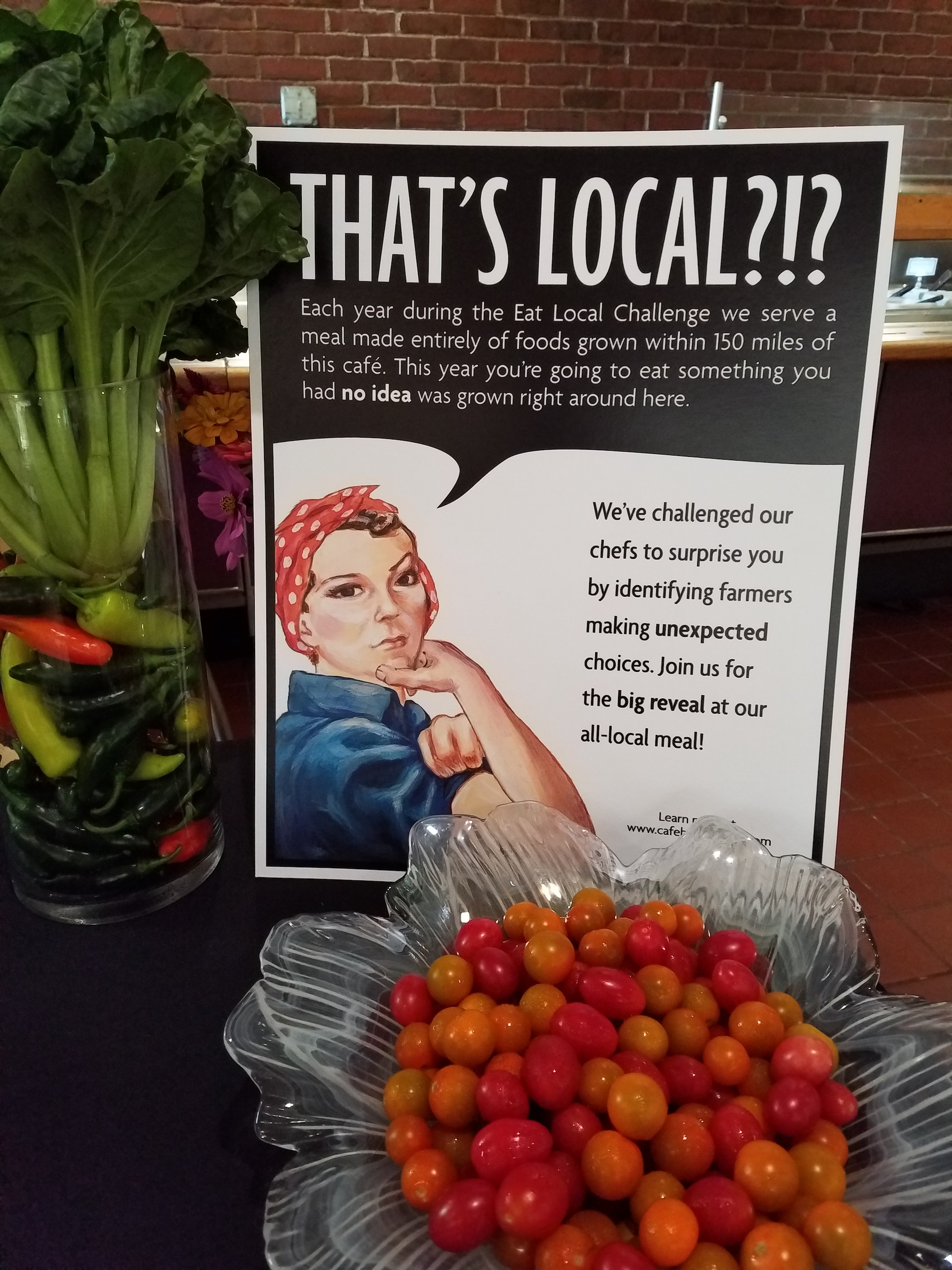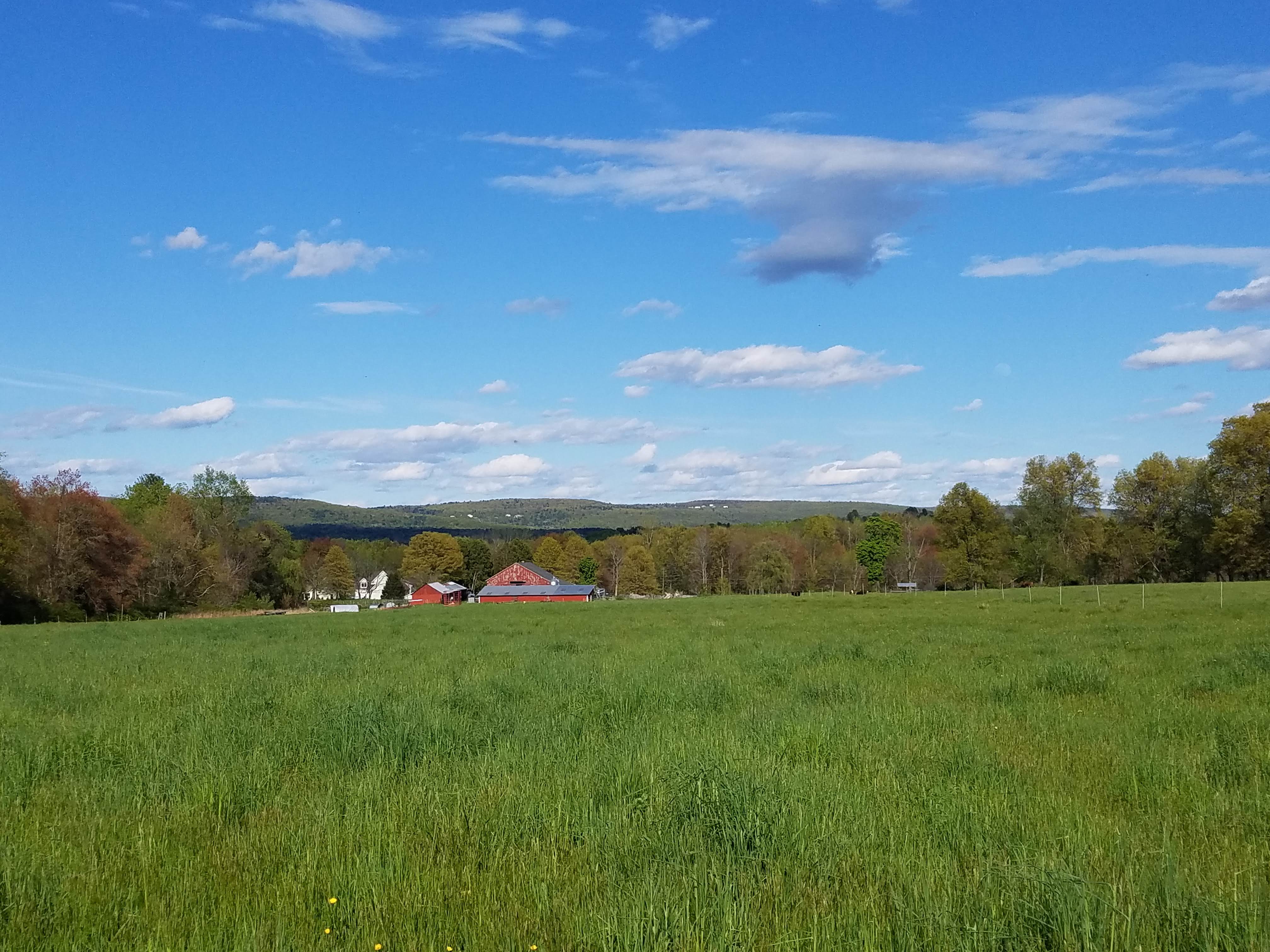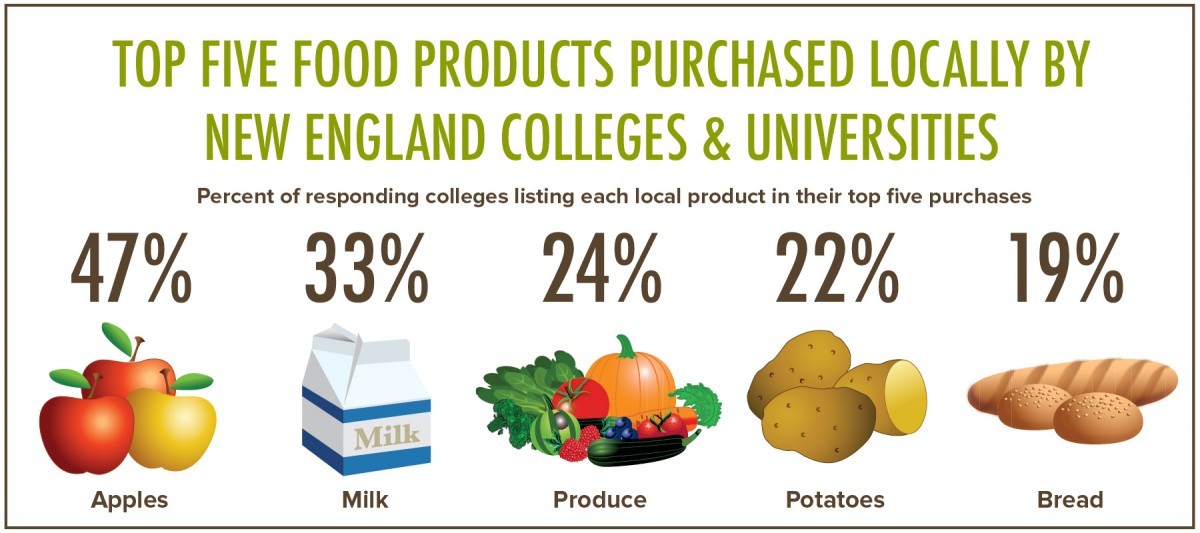 For those of you who are interested in local food systems, FINE (Farm to Institution New England) has written an interesting six-part blog series on food metrics, called “Measuring Up”. The entire series can be accessed here.
For those of you who are interested in local food systems, FINE (Farm to Institution New England) has written an interesting six-part blog series on food metrics, called “Measuring Up”. The entire series can be accessed here.
Some highlights include:
The struggle around defining “local”: While some institutions create their own definitions of local, others use third-party tools or federal/state definitions. The 2008 Food, Conservation, and Energy Act (2008 Farm Bill) defined local as less than 400 miles from a product’s origin or within the state in which it was produced. By this definition, parts of Virginia would be considered local to southern Connecticut – this definition is not generally considered to be appropriate for New Englanders focused on promoting local food. In Vermont, legislation has been passed that defines local as goods that “originated within Vermont or within 30 miles of the place where they are sold, measured directly, point to point.” https://www.farmtoinstitution.org/blog/measuring-when-how-and-why-define-local
Institutional food budgets: The average annual food budget for individual K-12 respondents in New England was $402,000. For health care respondents it was $1.8 million, and responding colleges had an average annual food and beverage budget of $3.8 million. Ranges within each type of institution are also wide; in the college sector alone, the average annual food and beverage budget ranged from $23,000 to $25 million [3]. https://www.farmtoinstitution.org/blog/measuring-working-within-system-institutional-budgets-operational-characteristics-and-local
Fair pricing: Both producers who currently sell direct-to-institution and those who are not yet selling to institutions referenced additional markets and building relationships in the community as reasons for working with institutions. However, while 64.1 percent of those currently selling to institutions listed fair price as a reason for working with institutions, only 31.6 percent of those respondents who are interested in but do not currently sell to institutions listed fair price. https://www.farmtoinstitution.org/blog/measuring-producer-perspectives-institutional-markets
The importance of relationships: FINE’s 2016 Producer Perspectives survey showed that producers who currently sell to institutions grew by an average of three acres over three years, while those that didn’t sell directly to institutions stayed the same size. In New England, where just 5% of the land is dedicated to food production, opportunities to increase farmland allow the region to depend less on industrial agriculture production and move towards self-reliance. Establishing local relationships with farmers, fishermen, and ranchers also allows for increased levels of transparency and accountability which can lead to more sustainable and responsible production habits. https://www.farmtoinstitution.org/blog/measuring-data-driven-recommendations-achieving-farm-institution-success
As we at Hampshire College continue to try to refine and improve our food system, data like this can provide very interesting and useful insights. I strongly encourage everyone to read the entire blog series to gain a greater understanding of the food systems in which we live and work.


